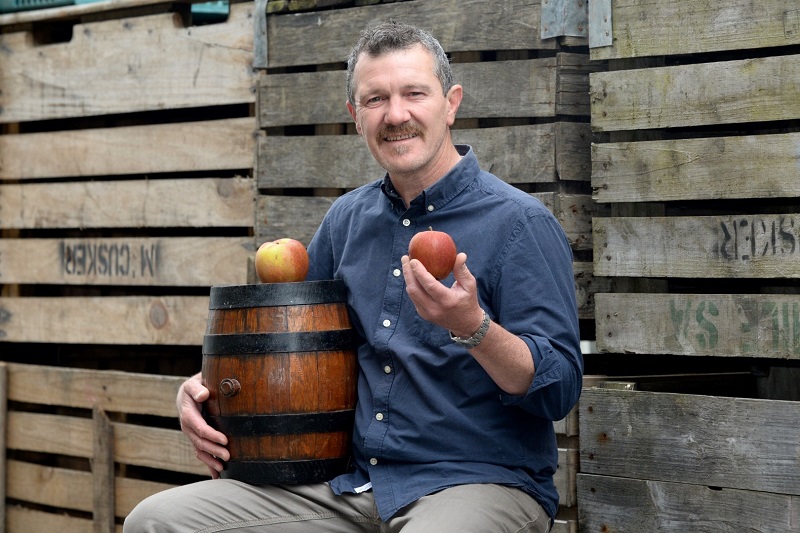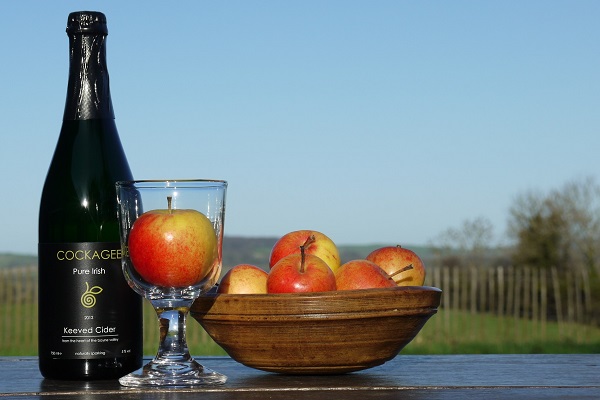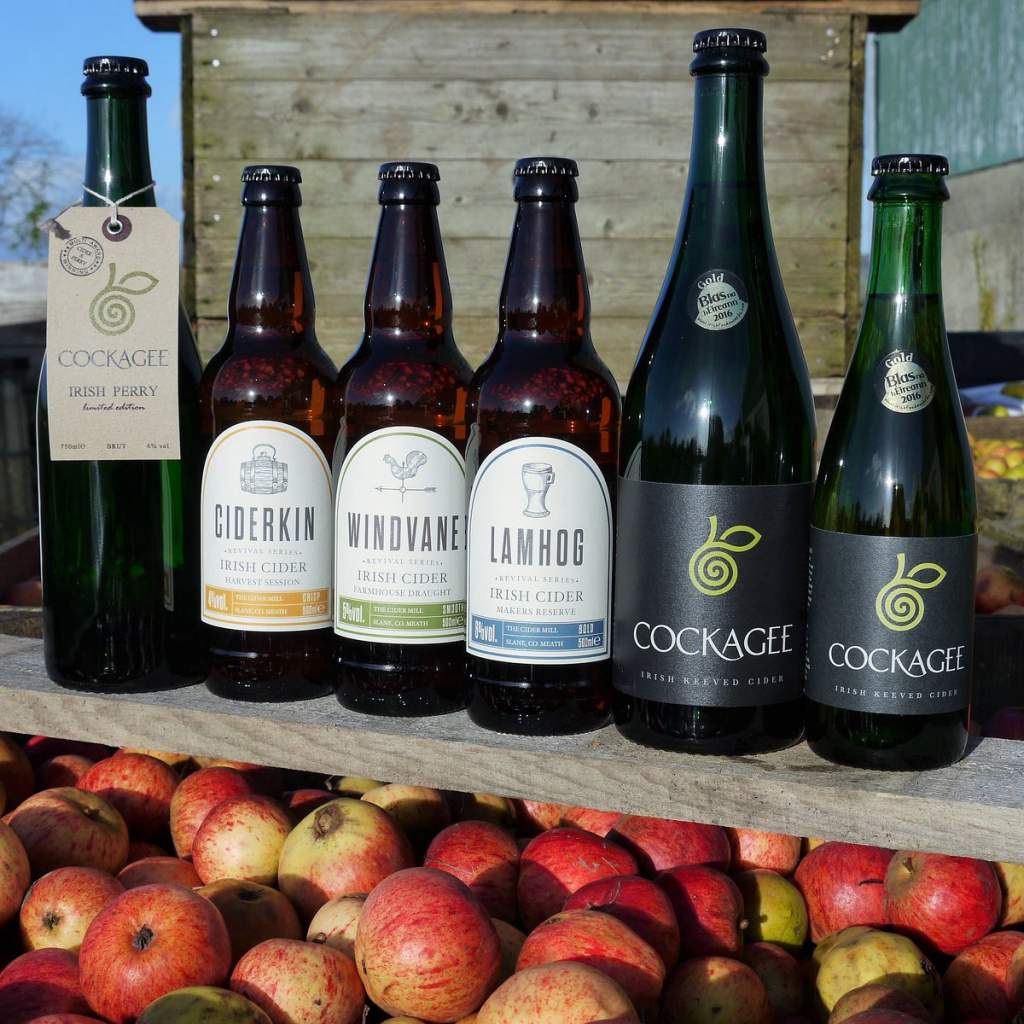The art of Cider making – Learn more on our Farm to Fork tour
Our farm to fork tour is one of the newest tours that we have. We wanted to put together a tour that shows the joys and flavours that Ireland has to offer visitors! Visit artisan producers and farms at the forefront of Ireland’s best food makers. Bake your own bread and enjoy tasting samples throughout the day. Meet the people that make it happen and let them give you an insight into their world and their passion for producing world class food and drink. Bake bread with flour from Ireland’s oldest flour Mill, learn about Irish Cider and sample some of our best. Visit a working turkey farm and taste mouth-watering Irish goats cheese before returning to Dublin all in one day! You will visit some incredible farms and sites of some delicious Irish food. Experience the Irish culture in the form of food!

One of the main activities that you will be seeing is the art of Cider. At 3:30 we will be visiting the Cockagee Cider orchard which is a Multi award winning Cider producer! Meet mark and take a look at his apples! We finally visit an apple orchard and home to Cockagee Cider. Mark is an award winning cider producer has been making this prized liquid for many happy years. Produced on his home farm, Mark will take you to see his orchard and explain how apple cider is made before you finally get to taste some samples. What a wonderful way to finish this foodie fiesta! Here we can start the learning process and see exactly how delicious Irish cider is made.

Cockagee which is a somewhat unusual name is a revival of the once famous Irish Cider Cockagee first mentioned in 1664. Originating from the Irish language ‘Cac a gheidh’ which translates as ‘goose turds’ and refers to the yellow/green colour of the fruit from the Cockagee apple tree. These Special Irish apples can be described as: A very old variety of Irish origin but it’s real history seems lost. The flesh is yellowish white, firm and crisp. The Juice is moderately plentiful, of an amber colour and a harsh austere taste, and as a cider fruit it has long possessed the highest repute. This apple triumphs over all others in sauce, tarts and pies, as much as its juice does in cider.

As you may know Cider is a sweet juice of apples that can be consumed as a beverage or used as a raw material in vinegar making. It is typically a clear, golden drink, which can range in colour from a pale yellow to a dark amber rose. The flavour varies depending on the process in which it is made, what apples are used and where it is made. Its flavours can range from very sweet to tart to bitter-sweet. But Irish cider is special, very special. It is not like your normal pub ciders such as Bulmer’s, no. Irish cider is perfect and has an extremely unique flavour as you will see when you visit the award winning Cockagee cider farm! People have known how to make cider for thousands of years. Archaeological evidence shows that ancient European and Asian cultures used apples to make a crude version of cider as early as 6500 B.C. The art of cider making improved over the years as people developed a better understanding of the factors that impact cider flavour. During the sixth century, a profession of skilful brewers was established in Europe. These people made beer-like beverages and also cider.
The most important thing to remember in cider making is the quality of the apples. To produce the best cider, these apples must be juicy, sweet, well ripened and have adequate levels of natural acids and tannins
Here is the 7 step process to producing a great cider:
- Harvesting: In the harvest months the apples are collected. At this time, field workers pick the apples by hand and transfer them to large storage bins, which can hold about half a ton of fruit. When these bins are filled, they are transported by tractor to the processing plant. At the plant they are stored outside for about a week which allows them to soften. This makes the apples easier to process and increases the amount of sugar in the juice.
- Washing: After the apples have mellowed, they must be washed to remove leaves, twigs, insects, spray residues, and harmful bacteria. They are poured out from the bins onto a scrubber. This machine rinses and scrubs each apple, removing most chemical residues from the skin. From there, they are moved along a conveyor to a hopper filled with water. A worker is on hand to see that an even stream of apples flows into the bath and makes sure that the apples are thoroughly washed. From the hopper, the apples are put on a conveyor and moved to another worker. Jets of water aid in moving the apples. Each apple is inspected and any rotten or moldy fruits are removed. Since cider taste can be negatively affected by many different factors, cleanliness is essential during manufacturing.
- Grinding: Next, the apples are put in a large mill and ground to a fine pulp with the consistency of applesauce. This is done to ensure that the maximum amount of juice can be extracted from the apples. Fine grinding has the added benefit of reducing damage caused by oxidation. The pulp is put into appropriately labelled 55 gal steel drums with plastic liners. Some of these drums continue on through the cider making process while the rest are sent to a freezer to be used later. The frozen pulp ensures that cider can be produced throughout the year when apple supplies are low.
- Pressing: To remove the juice from the pulp it is pressed. Depending on the desired cider flavour, the juice from various types of apple pulp are used. This blend is then taken by the press operator and stacked for pressing. Wooden racks and forms are used for stacking the juice. Each form is lined with a nylon cloth. Nylon is used because it is easy to clean and sturdy enough to withstand many pressings. To start, several barrels of pomace are poured onto the cloth. The corners are then folded up and the form is removed. As a result, a square-shaped layer of pomace called a cheese is formed. A rack is placed on top of the cheese and another form is put in place. The process is repeated until 10-12 cheeses are in a stack. The whole stack is put in a large stainless steel tray that has been designed to hold the cider as it is pressed from the pomace. A worker puts the stack under the cider press, called a wring, and turns it on. This delivers as much as 30,000 lb (13,620 kg) of pressure from a hydraulic pump.
- Cooling and Filling: The cider is expelled from the pomace and pumped through plastic tubes to a cooling tank. As the cider is transferred to the cooling tanks, it is passed through a screen mesh to remove any pulp pieces from the liquid. It is then chilled and stored at 0.6° C. This helps to inhibit the contamination by undesirable microorganisms. If this cider is of the unfermented variety, meant to be unfermented, it is sent to a mixing tank and pasteurized. Preservatives such as potassium sorbate are added and the juice is sent off to the filling lines.
- Fermentation: Before fermentation is allowed to proceed, the various fermentation-assisting chemicals are added. Depending on the manufacturer, the cider may be allowed to ferment in a large, sealed bulk tank, or in the individual bottles. If it is fermented in the bottles, the product will be sold with a bottom layer of sediment. The sediment is the remains of the fermentation yeast. In bulk fermentation, the cider is siphoned off after the yeast has died. This allows for a sediment-free product. Complete fermentation may take one month or more.
- Filling and packaging: When the cider is ready for filling, it is filtered again and pumped into the appropriate packaging. In this filling process, the empty, sterile bottles move along a conveyor and are passed under a filling machine. The machine pumps cider into the bottles to the desired volume. The caps are then put on the bottles and then labeled. The jugs are put in boxes, then pallets, and stored at just above freezing until the next day when they are delivered to stores.
You will be tasting the Cockagee cider and meeting mark to go through the history and process of Irish cider. Remember to keep these tasting notes in mind while tasting: Delicate fresh apple aromas and rich fruit flavours, a robust and full bodied, complex cider with a soft natural sparkle, bittersweet twist and long dry finish. Serve chilled in a stemmed. Enjoy on its own or as a food accompaniment. It is an ideal Irish and local alternative to prosecco, Champagne or Cava etc. What a day you have in store for you! Join the adventure and book your food tour today!

